#Rio de Roosevelt
Text
The Old Lion: A Novel of Theodore Roosevelt by Jeff Shaara #ARC #BookReview #StMartinsPress #NetGalley
I know a lot about #TheodoreRoosevelt so I was curious about an upcoming #HistoricalFiction book, #TheOldLion by #JeffShaara. How much was right and how much was exaggerated? You'd be surprised. #NetGalley #ARC #BookReview #TeddyRoosevelt #USPresident
In one of his most accomplished, compelling novels yet, acclaimed New York Times bestseller Jeff Shaara accomplishes what only the finest historical fiction can do – he brings to life one of the most consequential figures in U.S. history – Theodore Roosevelt – peeling back the many-layered history of the man, and the country he personified.
From the mid-nineteenth century to the early twentieth…

View On WordPress
#Alice Roosevelt#ARC#ARC Review#Badlands#Book Review#Gilded Age#Jeff Shaara#National Parks#NetGalley#New Books#Nobel Peace Prize#Post-Presidency#Presidential History#Presidents#Rio de Roosevelt#River of Doubt#Rough Riders#Spanish American War#St. Martin&039;s Press#Teddy Roosevelt#The Old Lion: A Novel of Theodore Roosevelt#Theodore Roosevelt#U.S. Politics#U.S. Presidents#Vice President
2 notes
·
View notes
Text
Non solo semplici Cartoni! - Animazione
In un tranquillo pomeriggio di qualche giorno fa mentre preparavo un caffè risanante, mi è capitato di avere un' insolita chiacchierata con uno dei miei parenti su un mediometraggio di animazione trasmesso in televisione proprio in quel momento: "Saludos Amigos", classico Disney del 1943!
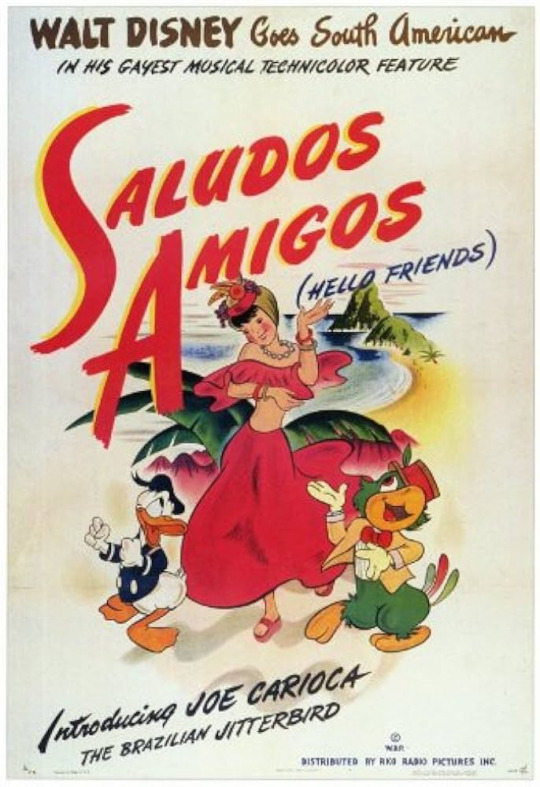
Inutile dire che ero in estasi! Dopotutto io adoro l'animazione, e non ho potuto fare a meno di intromettermi per sapere cosa ne pensasse. Insieme alla voglia sfrenata di raccontare alcuni piccoli dettagli su questa pellicola con un po' di fierezza personale. L' entusiasmo era eccessivo e per quanto la persona in questione amasse davvero i personaggi di Walt Disney, lo scambio di battute fra di noi fu breve e venni congedato abbastanza in fretta da una classica frase di chi non vuole saperne di subire delle info-dumping "Io so solo che sono cartoni animati di quando ero piccolo e mi basta solo questo" e andava bene così.
Ma io non demordo e ne parlo qui al meglio delle mie possibilità!
Con l'inizio della seconda guerra mondiale l'attenzione del mondo si concentrava in larga parte sugli eventi salienti degli scontri in Europa. Come è facile immaginare l'animazione della Disney non potette godere appieno dell'attenzione del mondo, rimanendo con pochissimi finanziatori disposti a investire nelle produzioni degli artisti di casa Disney di cui si interesso solamente il governo statunitense a preservare attraverso alcuni finanziamenti federali, destinati però a essere utilizzati alla produzione di corti di propaganda con soldati, armi o persino alcune guide su come il popolo americano poteva contribuire alla causa bellica.
Qui si ritorna al nostro topic iniziale. Con la produzione di Saludos Amigos (1943) si stava tentando di sfruttare appieno la popolarità dei personaggi dello studio di Hollywood in Sudamerica, decidendo così di impiegare la fama mondiale di Disney trasformandolo nell'ambasciatore ideale con cui era possibile saldare dei buoni rapporti diplomatici con i vicini degli statunitensi. Difatti quest'opera era anch'essa un progetto nato dal sostegno diretto del governo statunitense, seguendo così fedelmente l'idea politica del "buon vicinato" intrapresa in quegli anni dal presidente Delano Roosevelt (Good Neighboor policy) sosteneva l'idea che mantenere dei buoni rapporti con i paesi limitrofi potesse favorire il governo Americano riducendo al minimo le influenze esterne della Germania Nazista.

La produzione dei 4 corti del mediometraggio furono il risultato di una vacanza di circa 2 mesi a cui partecipò lo stesso Walt Disney assieme ai suoi animatori. Viaggiando per l'America meridionale i dipendenti della Disney col tempo confezionarono un prodotto animato frutto diretto delle loro esperienze con la cultura locale trasmessa dalla gente del posto. Lo staff di artisti ha rappresentato i in modo personale i colori dei paesi visitati accompagnando lo spettatore attraverso un secondo viaggio riproposto per il pubblico, con un misto di sequenze dal vivo da una parte e dall'animazione dall'altra. Offrendoci interessanti incontri di culture con un Pippo che scopre il gaucho argentino o un Paperino in visita in Perù o quest'ultimo in visita a Rio de Janeiro per fare la conoscenza di un novello personaggio brasiliano conosciuto come il futuro amico José Carioca!
La storia di questi grandi lavori non smetterà mai di affascinarmi.
(Primo vero articolo çwç, accetto critiche costruttive volentieri!)
Fonti utilizzate
Articoli:
Dale Adams, Saludos Amigos: Hollywood and FDR's
Good Neighbor Policy, University of Texas, Austin, 2007.
Siti Web:
https://www.ilsollazzo.com/c/disney/scheda/SaludosAmigos
6 notes
·
View notes
Text
The Complex Legacy of Brazilian Explorer Cândido Rondon
The general was an early advocate for Indigenous people—but reality has fallen brutally short of his ideals.

In 1914, Theodore Roosevelt embarked on a dangerous journey into the heart of the Amazon rainforest, following the mysterious River of Doubt. Across the two-month-long trip, the former U.S. president injured his foot in the river, lost 60 pounds, and nearly died—surviving only thanks to the efforts of a five-foot-tall Brazilian man, who came from a poor and partly Indigenous background.
This was Cândido Rondon: two-star general, explorer, scientist, conservationist and anthropologist. Born in a small city in Brazil’s Mato Grosso state and orphaned at the age of two, Rondon managed to win a place at the military academy in Rio de Janeiro, where he soon stood out on account of his excellent grades.
Rondon is also the subject of Into the Amazon, a new biography by journalist Larry Rohter, former Brazil correspondent for Newsweek and the New York Times. Following Rondon’s long public career—stretching from the end of the Brazilian monarchy, in 1889, to his death in 1958—Rohter’s account is highly complimentary, praising Rondon’s statesmanship and describing him as the “greatest tropical explorer in history.”
It’s true that today’s Brazil bears the stamp of Rondon’s considerable influence. As army engineer, Rondon laid 1,200 miles of telegraph wires through inhospitable terrain, discovered and cataloged unknown species and was the first to contact isolated Indigenous communities. Thanks to Rondon’s efforts, what was previously only known through cartographic projections and fantastic tales assumed real form. And in a country where Native peoples are often treated as an obstacle to development, this general was one of the first to advocate for their rights.
But despite Rohter’s meticulous research, which makes use of both U.S. and Brazilian archives as well as Rondon’s own diaries, his book has little to say about what Indigenous communities thought of his work—nor about Rondon’s own doubts, towards the end of his life, over whether leaving tribes in isolation might have been better than forcing a contact.
Still, it’s undeniable that Rondon laid the foundation for the protected Indigenous territories that now make up 14% of the country’s landmass and have become an established, if imperfect, barrier against deforestation, mining and criminal activity that affects Indigenous groups.
Continue reading.
#brazil#politics#brazilian politics#history#environmental justice#indigenous rights#mod nise da silveira#image description in alt#candido ronon
4 notes
·
View notes
Text
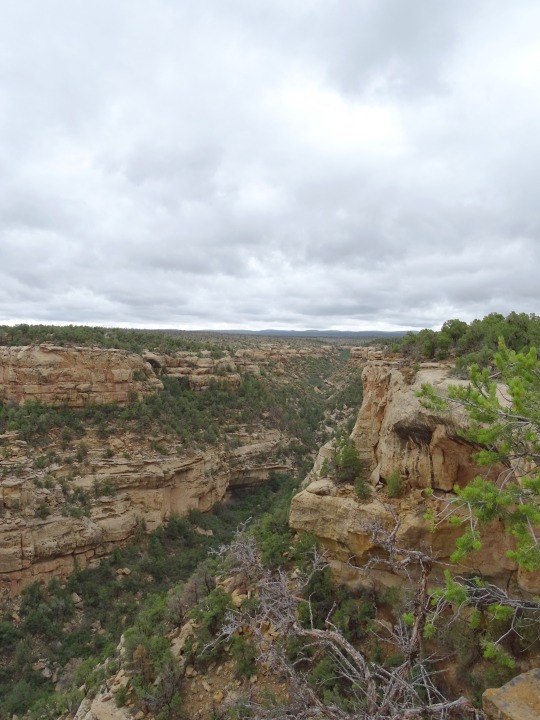


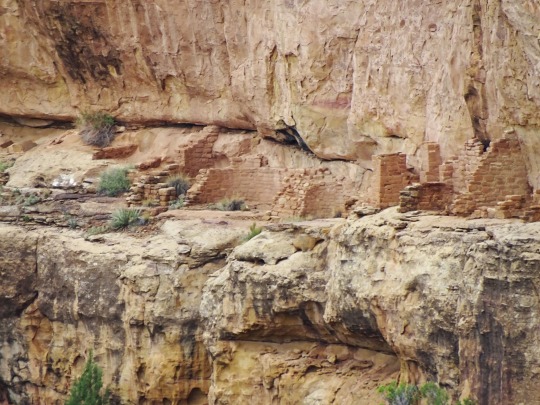
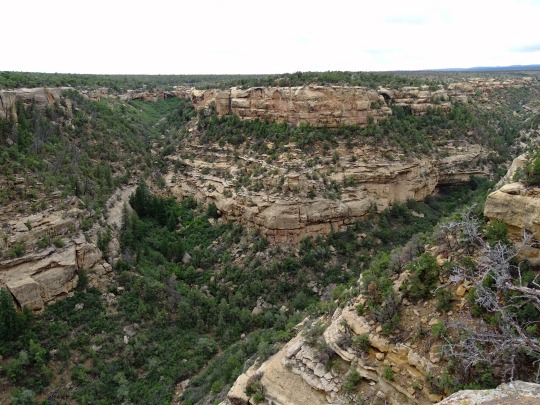
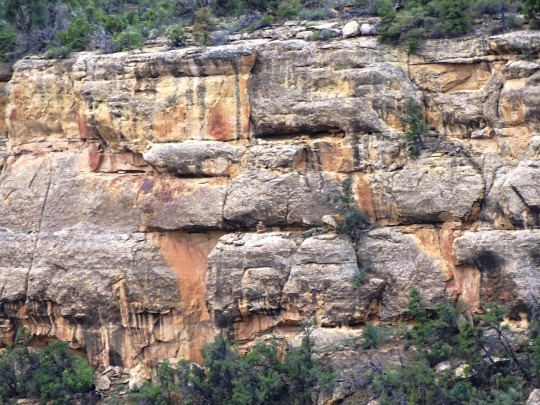




Mesa Verde National Park (No. 1)
Mesa Verde National Park is an American national park and UNESCO World Heritage Site located in Montezuma County, Colorado. The park protects some of the best-preserved Ancestral Puebloan archaeological sites in the United States.
Established by Congress and President Theodore Roosevelt in 1906, the park occupies 52,485 acres (21,240 ha) near the Four Corners region of the American Southwest. With more than 5,000 sites, including 600 cliff dwellings, it is the largest archaeological preserve in the United States. Mesa Verde (Spanish for "green table", or more specifically "green table mountain") is best known for structures such as Cliff Palace, thought to be the largest cliff dwelling in North America.
Starting c. 7500 BC Mesa Verde was seasonally inhabited by a group of nomadic Paleo-Indians known as the Foothills Mountain Complex. The variety of projectile points found in the region indicates they were influenced by surrounding areas, including the Great Basin, the San Juan Basin, and the Rio Grande Valley. Later, Archaic people established semi-permanent rock shelters in and around the mesa. By 1000 BC, the Basketmaker culture emerged from the local Archaic population, and by 750 AD the Ancestral Puebloans had developed from the Basketmaker culture.
The Pueblonians survived using a combination of hunting, gathering, and subsistence farming of crops such as corn, beans, and squash (the "Three Sisters"). They built the mesa's first pueblos sometime after 650, and by the end of the 12th century, they began to construct the massive cliff dwellings for which the park is best known. By 1285, following a period of social and environmental instability driven by a series of severe and prolonged droughts, they abandoned the area and moved south to locations in Arizona and New Mexico, including the Rio Chama, the Albuquerque Basin, the Pajarito Plateau, and the foot of the Sangre de Cristo Mountains.
Source: Wikipedia
#desert varnish#nature#travel#original photography#vacation#tourist attraction#landmark#landscape#countryside#clouds#flora#ancestral puebloan archaeological site#Native American history#summer 2022#Colorado#Mountain West Region#cliff#bush#geology#Mesa Verde National Park#UNESCO World Heritage Site#Montezuma County#Foothills Mountain Complex#ruins#Paleo-Americans
4 notes
·
View notes
Text
Un géant oublié : Georges Bernanos
Les lecteurs de ce Blog croisent souvent ce nom dans ces lignes, et ils savent mon admiration pour l'homme (écrivain et fan de moto) et pour son œuvre. Avec l'explosion des progrès techniques (tous ne sont pas heureux, mais beaucoup ne sont pas ''que mauvais''), son livre ''La France contre les robots'' (1947) est une mine de réflexions et d'analyses –et de craintes, plus d'actualité que jamais. Bien que je le revisite assez fréquemment, j'avais oublié son anniversaire, le 20 février. Même avec un mois et demi de retard, il mérite que l’on se souvienne de lui...
Pour Georges Bernanos (1888--1948), la France est le dépositaire historique des valeurs humanistes issues du christianisme, dont elle est une garante (est-ce pour cela que je l'aime tellement ?). Parfois royaliste, cet anticonformiste de droite (ceci expliquant aussi cela !), aimait pourtant l'esprit de révolte de 1789, ce ''grand élan [...] inspiré par une foi quasi-religieuse dans l'homme'' et il était, dit Jacques Julliard, ''un rempart de la démocratie, même à son corps défendant''. Paradoxalement, il considérait que ''le nationalisme déshonore l'idée de patrie'', comme tout excès peut, en fin de compte, nuire à la cause qu'il prétend défendre..
Dans ''Les Grands Cimetières sous la lune'', ce catholique fervent a pris position contre Franco et contre l'attitude conciliante de l’Église d'Espagne à son égard (ce qui prouve que je peux admirer un homme sans adopter toutes ses idées !). Son besoin de liberté l'a amené, lorsqu'on lui a proposé la Légion d'honneur, à trois occasions, à la refuser, définitivement. Et lorsque l'Académie française a voulu l'accueillir, il a fait cette réponse merveilleuse : ''Quand je n'aurai plus qu'une paire de fesses pour penser, j'irai l'asseoir à l'Académie''.... ce qui est bien loin des danses du ventre déshonorantes que certains de nos contemporains (d'ailleurs peu ''temporains'') sont prêts à faire, sans rougir, pour une rosette rouge, sur canapé.
Une constante, chez Georges Bernanos, est l'exploration du combat spirituel entre le Bien et le Mal, qu'il va approfondir à travers le prêtre catholique du Journal d'un curé de campagne (1936), tendu vers le salut de l'âme de ses paroissiens perdus.. Et s'il n'hésitait pas à faire parfois appel au divin et au surnaturel, il ne diabolisait jamais ses ''ennemis'' : comme le faisait Mauriac, il voulait comprendre ce qui se passe dans une âme, même hostile, derrière les apparences et les situations.
Bernanos disait qu'il ''était né avec la Grande Guerre’’. Celle de 1939-1945 va le marquer aussi, mais comme auteur (Des romans aussi peuvent mourir à la guerre). Révolté par les accords de Munich, il fustigera Vichy (ce ''promoteur d'une France potagère''), et s'exilera alors au Brésil. Eloigné des combats et du ''quotidien'', il se projette dans le futur, et anticipe une ''ère des techniciens'' --qu'il juge inévitable et qui lui fait très peur. Et un peu comme il avait exprimé une grande aversion envers l'Allemagne de Hitler, il va éprouver une grande méfiance envers les Etats-Unis de Roosevelt et leur puissance matérielle si immense que sa finalité –telle qu'il la prévoit-- ne peut être qu'hégémonique. Le futur lui donnera pleinement raison : aujourd'hui encore, nous portons témoignage de l'ampleur de sa vision. Hélas !
Gaulliste sans être ''suiviste'', il va établir, depuis Rio de Janeiro, des liens avec le Comité Central de la France Libre, qui va relayer ses idées et ses écrits dans la presse internationale. Et c’est aux membres de ce Comité qu’il enverra, en mars 1944, un manuscrit, l'Hymne à la liberté, qu'ils lui conseilleront d’intituler ''La France contre les robots'' qui a payé son retour en Europe, en juin 1945 (et plus, ensuite !)
A son retour en France, Bernanos est écœuré par l'épuration et par l'opportunisme qui, dit-il, détruisent le pays. Chroniqueur à La Bataille et à Combat, il lance un avertissement solennel aux français : avec l'avènement de l'ère atomique et la crise générale de la civilisation, la France est en danger de perdre sa place (prévision qui s'est vérifiée), en même temps que son rôle primordial vis-à-vis de l'humanisme chrétien (ce que les croyants voient et que le monde nie). La Liberté pour quoi faire ? et La France contre les robots sont deux cris d'alerte, lancés pour mettre la France en garde contre les dangers de son inconséquence devant des progrès techniques effrénés qu'elle ne pourra bientôt plus maîtriser.
''La France contre les robots'' (1947) est en fait un avertissement solennel : ''le machinisme –comme on disait alors-- limitera la liberté des hommes et perturbera leur mode de pensée''. Pour Bernanos, l'idolâtrie de la technique des anglo-saxons va détruire notre civilisation : la libre entreprise n'est pas synonyme de bonheur pour l'humanité, car ''il y aura toujours plus à gagner à satisfaire les vices de l'homme que ses besoins''. Et 75 ans plus tard, envahi par les drogues assassines, notre Etat moribond trouve de l'argent pour finir de détruire les âmes des enfants... déjà mises en lambeaux par les stupides idées woke et greta thunbergistes.
''La France contre les robots'' est une critique de la civilisation des machines et d'autres formes d'asservissement à venir, une alerte à la France, et au monde à travers elle, sur une menace d' aliénation de l'esprit par la technique et l'argent : convaincu que le monde moderne est une ''conspiration contre toute espèce de vie intérieure'' (NDLR : ce qui fait de lui le premier ''complotiste''. J'étais fier d'en être un, ce voisinage m'enchante !) , il dénonce ''la dépossession progressive des États au profit des forces de l’Industrie et de la Banque, en un avènement triomphal de l’argent, qui renversera l’ordre des valeurs humaines et mettra en péril tout l’essentiel de notre civilisation''. Nous y sommes, hélas ! Lui l'avait prévu, dès 1947... et nous devons reconnaître qu'il avait ''tout juste''. C’était un prophète !
Cet immense visionnaire a écrit notre ''roman d'un français de 2023'' et a ''vu'', avec un demi-siècle d'avance, tout ce qui nous désole, nous menace et nous assassine, aujourd'hui. Par exemple, lorsque Bernanos prédit, dans ''18 leçons sur la société industrielle'', que la multiplication des machines développera l'esprit de cupidité, peut-on lui donner tort, ''le monde étant devenu ce que nous voyons''? La France contre les robots annonce une tyrannie du Nombre, jusque là inenvisageable : ''Le Nombre, écrit-il, est une infection lente qui crée une société à son image, une société d'êtres non pas égaux, mais pareils, seulement reconnaissables à leurs empreintes digitales''. Trois-quarts de siècle plus tard, le Nombre, omniprésent, indispensable, mortifère, s'appelle ''Big Data'', et nous asservit de plus en plus.
Dès la fin de la Guerre, Bernanos a tracé les grandes lignes de ce que, en prophète, il devinait comme devant être le monde de demain, devenu le nôtre, et il avait vu juste sur à peu près tout, Soixante-quinze ans plus tard, nous savons qu'il avait compris avant tout le monde que ''à partir du moment où on raconte que le salut de l'homme peut être ici-bas, toute vie contemplative se limite à une fuite ou à un refus". Certains ont appelé cette vision : ''l'écologie spirituelle'' : ''Un prophète n'est vraiment prophète qu'après sa mort. Jusque-là ce n'est qu'un homme pas toujours très fréquentable. Mais l'avenir ne se subit pas : on le fait''.
Et en écrivant, en 1947 : ''Devant les moyens dont dispose le système, un esprit ne peut rester libre qu'au prix d'un effort continuel. Qui de nous peut être sûr de résister à tous les slogans et à la tentation d'opposer un slogan à un autre ?'', il a diagnostiqué le mal mortel de nos sociétés, où le dialogue est devenu une denrée rare, et où l'insulte et le qualificatif dit déshonorant se croient des arguments.
Georges Bernanos avait, seul à l'avoir fait, deviné à quoi ressemblerait le monde dont nous subissons la folie, si différent de tout ce qui l'a précédé. Il en a dressé un portrait d'une cruauté que personne n'oserait faire sienne, aujourd'hui... sauf un fou ou un blogueur (limité par définition à une diffusion ''confidentielle''). Est-ce pour ça (outre la moto !) que je l'aime tellement ?
H-Cl.
2 notes
·
View notes
Note
Hey please go more in depth about the behind the scenes stuff of The Three Caballeros, my interest has been very much piqued
oh my god do you know what you've unleashed-
So! The story behind Three Caballeros actually starts with it's preceding film, Saludos Amigos, which was released two years earlier in 1942. Both films were part of the Good Neighbor Policy of the United States to Latin America during Roosevelt's presidency, especially during the early 1940s. (To summarize, the policy's mission statement was basically "Hey, it would SUCK for us if South America allied with the Axis, we need them to like us.") Part of that was the creation of the Office of the Coordinator of Inter-American Affairs, specifically the Motion Picture Division, which advocated for filmmakers to hire Latin American actors and portray Latin America in a positive light.
On the other hand, there was Disney animation studios which, if you can imagine, wasn't doing so well. It was - well, it was World War 2, obviously, so there was that. Bambi hadn't gotten as much money as they'd hoped. They couldn't export their films to Europe. Not to mention the animator's went on strike in 1941 (led by Art Babbitt, the creator of Goofy). So the OCIAA called up Disney and said "Hey, you're popular, can we send you on a trip to South America so you can make some short cartoons about how awesome it is. We'll pay for everything btw." And Walt Disney was like, "Sure."
And the OCIAA was like, "But you can't tell anybody you're there for government propaganda reasons, they're starting to not like when we send celebrities down there." And Walt Disney was like, "Okay."
So they got a team of about eighteen animators and flew down to Rio de Janeiro, where they were supposed to stay for ten days (allegedly to promote the Brazilian release of Fantasia) but ended up staying for three weeks learning as much as they could about Brazil. Most importantly, they learned that Brazil Really Likes Parrots, and they met the Brazilian cartoonist J. Carlos, who Disney asked to move to the US and work as an animator for them. Carlos was like "no thanks" but he did send them a drawing of a green parrot.
Saludos Amigos was initially supposed to be four animated shorts, each focusing on different countries, but it was decided last minute to stitch them together for a theatrical release (the end product is only forty minutes long, the shortest animated feature to date.) Two of the shorts had Donald and Goofy being clueless tourists in Peru and Argentina respectively. Initially, Donald was supposed to be an archaeologist, but the animators realized making him a tourist meant they could make jokes at his expense without offending the cultures they were being paid by the federal government to Not Offend.
Goofy's short was based on a cartoon they had already started writing, "How To Be A Cowboy", they just switched it to being about a gaucho (legendary skilled horsemen and folk symbols of Argentina). Getting on Argentina's good side was critically important, because there were already a lot of Axis support in the region - some of the newspapers talked negatively about Disney visiting them, but most of the citizens were (understandably) like "holy shit it's disney??" Anyways that part of the film was very popular in Argentina.
The Chile segment, on the other hand, was not popular in Chile. The animators couldn't come up with anything original so again, they once again reworked an idea they already had about a plane, now making it a plane that has to cross the Andes mountains. There wasn't much about Chilean culture. On the other other hand, one Chilean cartoonist hated it so much he made Condorito, who would then become the most popular comics character in Chile.
The last segment of the film was "Aquarela do Brasil" (Watercolor of Brazil), which was basically a music video to an already an existing song the animators heard at the hotel they were staying at. It also introduced José Carioca (a green parrot inspired by J. Carlos' drawing and voiced by popular singer José Oliveira), who one contemporary reviewer would describe as "superior to Donald Duck as Donald Duck is to Mickey Mouse" and Brazil would be like "holy fucking shit. ours now." and proceed to make him their adopted cartoon blorbo. (At least, from what I've heard.)
José (or Zé) Carioca was designed to be the opposite of Donald - cool (coughcoughsorrydonald). He was based on the malandro stereotype, which was sort of like, the "slick bad boys" of Brazil at the time. Also his surname Carioca isn't a real surname, it just refers to people born in Rio, like naming an American character John Newyorker or something. Mostly, he was based on his voice actor, who also went by Zé Carioca.
Anyways, Saludos Amigos premiered in Rio in 1942 and the United States in 1943, and it did well enough that the US government was like "here's some more money, now make another." Which FINALLY brings us up to the Caballeros.
Like Saludos Amigos, The Three Caballeros is a series of shorts, albeit more put-together under the running theme of it being Donald's birthday. The first two shorts, Pablo the Penguin and The Flying Gauchito, are pretty self-contained and ostensibly only added to pad the film's runtime since they couldn't be finished in time for Saludos Amigos. Then Zé comes back and convinces Donald to go to Bahia with him in the first scene to have animated characters and real-life actors on the same screen in color.
youtube
The technology for these scenes was developed by Ub Iwerks. Most of it was achieved through rear-screen projection and clear animation cells composited over the live-action footage. That's why Donald and Zé always seem to be in the very front or background. The woman Donald is flirting with is Aurora Miranda, Carmen Miranda's sister - Carmen was a famous actress and considered a goodwill ambassador for the Good Neighbor Policy.
The next segment introduces Panchito Pistoles, who, like Zé, suffers from made-up last-name syndrome (the Spanish word for pistols is pistolas, although House of Mouse would later retroactively make his real last name Quintero Gonzalez. Panchito was voiced by Joaquin Garay, a Mexican-American who had moved to the States as a baby and ran the Copacabana nightclub. Garay could sing just fine but, having grown up in the United States had a little trouble coming up with a natural convincing Mexican accent. They hired the Mexican actor Felipe Turich to be his vocal coach but in the end, Turich dubbed over Panchito's speaking lines in the Mexican Spanish and Italian versions of the movie.
The Three Caballeros song is based on an already existing song, Ay Jalisco No Te Rajes.
youtube
youtube
The whole song was animated by Ward Kimball (except for the solo shots of Zé, which were animated by Fred Moore). Kimball didn't have any direction for what exactly to animate, so he just threw together whatever his mind came up with and was actually surprised when Walt Disney liked it.
The next segment, Las Posadas, about the Christmas tradition, most notably for being in Mary Blair's artstyle. Blair was a concept artist for Disney and the only female employee to go on the South American research trip. Walt Disney liked her art, but she had a very distinct style that didn't fit the animation style they used, so it was mostly used for color reference. Both the Las Posadas and Arucuan bird/ train sequence earlier directly utilized her artstyle, however.


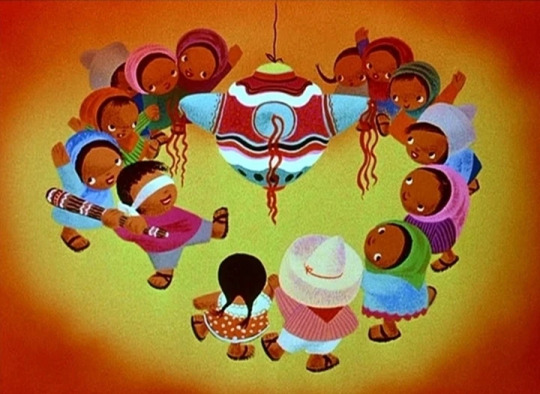
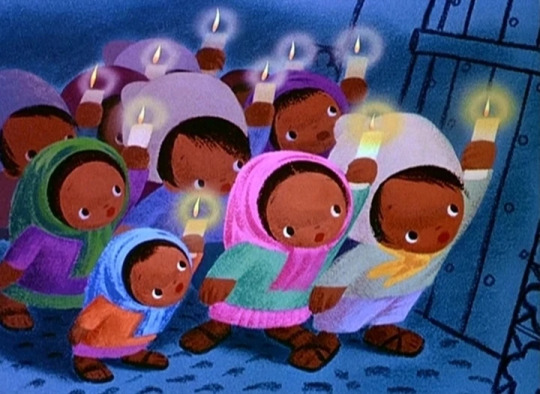
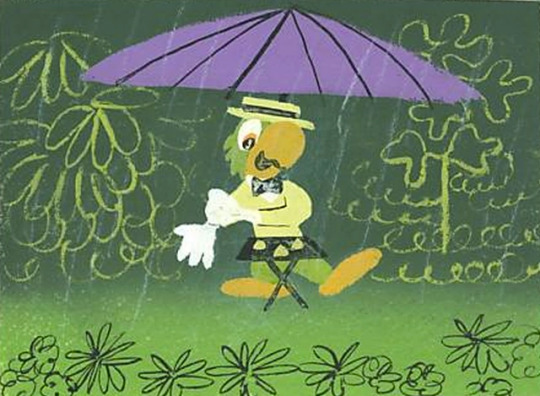

^ here's some of her concept art for Saludos Amigos/ Three Caballeros for reference. If you think it looks like one of those Little Golden Books illustrations, you're probably right because she went to work for them after leaving Disney. (As a side note, her most notable legacy for Disney was creating the concept designs for It's A Small World.)
Then Panchito explains the meaning behind the Mexican flag (thanks, Panchito) and shows the other two Mexico (in live-action, using the same effects as above).
The rest of the movie is mostly known for being...well, Donald Duck being horny for human women, specifically the singers Carmen Molina and Dora Cruz. "You Belong To My Heart" is basically Pink Elephants On Parade On Acid. The Cactus Dance segment features some pretty nice special effects though. Also there's a beach scene that was actually filmed in the Burbank parking lot - you can see the concrete walls in the background.
The Three Caballeros was released in Mexico in 1944 and the US in 1945. It did okay at making money, but most of the reviews were mixed, mostly focusing on how the film was more "technological razzle-dazzle" than actual story, and yes, Donald being horny. One critic said the sheer horniness would disturb people less squeamish than the Hays Office (the film censorship board you know from the "you can allow gay characters in your movies if they die" thing). There were plans to make a fourth character and third movie involving Cuba, but it never got off the ground and eventually diplomatic relations between the US and Cuba was too bad to even consider it.
José would be in one of the sequences on Melody Time, another package film, and also guest star in a couple more short cartoons. He also had his own comic book in Brazil that ran from the 1960s to 2018. Panchito didn't get quite as popular in Mexico, but the Mexican 201st Fighter Squadron used him as a mascot during World War 2. Both characters have since made cameo appearances in various Disney media - you can see Zé during the end sequence of Who Framed Roger Rabbit if you squint - as well as the theme parks. Mostly, the Mexican pavilion in Epcot's World Showcase, which was redesigned to be about the Caballeros in 2007. Then in 2015 they added the animatronics (that were originally built in 1971 for an attraction on Disney World's opening day, then the whole attraction was moved to Tokyo Disneyland, then it closed down and the Caballeros' animatronics were put into storage until they figured out how to work them again. They're probably one of the oldest animatronics in the park. Remember when Zé literally just fell over and they replaced the Donald animatronic with a bunch of memorial flowers.)
Anyways! That's The Three Caballeros, Disney's weirdest and most "technological razzle-dazzle" war propaganda movie. Is it any good? ...Eh ¯\_(ツ)_/¯. I mean, for being literally made to say "Hey Brazil hey Mexico we think you're really cool actually please don't become communist 🥺" it wins the award for being Not As Racist As It Could Be In The 1940s. (The bar was VERY low.) Nowadays it's current claim to fame is having a theme song that Disney desperately keeps trying to edit to avoid the modern connotations of Donald Duck and two other men telling the audience they're gay, (and a bunch of fans who appreciate them for coming out as a same-sex polyam couple in the 1940s. /J)
#it's me i'm fans#anyways thanks this movie is like one of my biggest special interests ;^^#ask#anotherlavendergay
2 notes
·
View notes
Text
Hi again! It’s us, the Yubi Lux team. Today we are going to be showing you a preview of some of what is in the works for our next collection. This collection is focused on tailoring and is inspired by the interior design of Dorothy Draper, an American interior designer. Draper’s work includes bright colours and prints but manages to remain sophisticated and elegant.


The Greenbrier Hotel. The interior decoration of this hotel is Draper’s most well-known work. At the height of her career, Draper was decorating luxury hotels all over the world, including $10 million hotel renovation in Rio De Janeiro at the worst part of the Great Depression. Oh yeah, she’s rich rich. To illustrate her place within American high society, here are some other facts about Dorothy Draper:
Draper’s great grandfather signed the declaration of independence
She was cousins with Eleanor Roosevelt
Draper married Dr George Draper, an expert on polio and the personal doctor of United States president Franklin D. Roosevelt

Here are two outfits that have been designed for our next collection. Referencing the hotel images above, you can see where inspiration has been drawn from and how these interior spaces have been transformed into tailored garments.


These photos show the toiling and testing process for the red, white, and blue jacket. Many tests are required to ensure we are happy with the fit of the jacket before we cut it out in its final wool fabric.
We hope you enjoyed this sneak peek of what’s to come and that you're just as excited as we are :)
We'll update you soon.
-Yubi Lux team xx
2 notes
·
View notes
Text
Prefeitura altera linhas do transporte coletivo no dia do desfile da Banda do Vai Quem Quer

Objetivo é facilitar o deslocamento eficiente de veículos e pedestres para minimizar as interrupções
Com objetivo de garantir a mobilidade urbana com mais segurança aos usuários das vias públicas nas festividades de carnaval, a Prefeitura de Porto Velho, por meio da Secretaria Municipal de Trânsito, Mobilidade e Transportes (Semtran), vai alterar temporariamente algumas rotas dos ônibus que fazem o transporte coletivo no próximo sábado (10), quando acontecerá o desfile da Banda do Vai Quem Quer.
Publicada nesta terça-feira (6), a Portaria nº 5/DET/GAB/Semtran/2024 determina as alterações nas rotas do transporte coletivo na cidade, no período das 12h à meia-noite, “para facilitar o deslocamento eficiente dos veículos e pedestres, minimizando interrupções causadas pelos eventos carnavalescos”.
As medidas adotadas pela Semtran, com base no Artigo 24 da Lei Nº 9.503 do Código de Trânsito Brasileiro (CTB), também focam na necessidade de controle e organização do trânsito, nos circuitos dos desfiles dos blocos de rua.
MUDANÇAS
Serão desviadas pela av. Duque de Caxias, Farquar e Pinheiro Machado, as seguintes linhas de ônibus:
São Francisco
Ulisses Via Tancredo Neves
Presidente Roosevelt
Orgulho Via Shopping
Orgulho via Rio Janeiro
Jardim Santana via HB
Esperança da Comunidade via, Cristal
Guajará, 04 de Janeiro via Planalto
Cristal da Calama
Cristal via Planalto
Norte Sul
Interbairros 030
Interbairros 040
Grande Circular A
Grande Circular B via Shopping
Vila DNIT
Nacional
Nova Esperança.
Pela av.Alexandre Guimarães, serão desviadas as seguintes linhas:
Mariana
Orgulho do Madeira
Jardim Santana
Morar Melhor
Bairro Novo
Ulisses Via BR
Campus UNIR
Triângulo
Novo Horizonte
Cidade Nova e Guaporé.
“A mudança nas vias contará com um ‘corredor’, que também servirá para o fluxo de ambulâncias, viaturas, transporte por aplicativo e taxistas, para melhor escoamento do trânsito nessas regiões”, finalizou o secretário da Semtran, Anderson Pereira.
Texto: Augusto Soares
Foto: Wesley Pontes
Superintendência Municipal de Comunicação (SMC)
Fonte: Prefeitura de Porto Velho - RO
Read the full article
0 notes
Text
Events 1.20 (before 1940)
250 – Pope Fabian is martyred during the Decian persecution.
649 – King Chindasuinth, at the urging of bishop Braulio of Zaragoza, crowns his son Recceswinth as co-ruler of the Visigothic Kingdom.
1156 – Finnish peasant Lalli kills English clergyman Henry, the Bishop of Turku, on the ice of Lake Köyliö.
1265 – The first English parliament to include not only Lords but also representatives of the major towns holds its first meeting in the Palace of Westminster, now commonly known as the "Houses of Parliament".
1320 – Duke Wladyslaw Lokietek becomes king of Poland.
1356 – Edward Balliol surrenders his claim to the Scottish throne to Edward III in exchange for an English pension.
1401 The Taula de canvi (Catalan: "Table of change"), described as Europe's first-ever public bank, began operations inside Barcelona's Llotja de Mar.
1523 – Christian II is forced to abdicate as King of Denmark and Norway.
1567 – Battle of Rio de Janeiro: Portuguese forces under the command of Estácio de Sá definitively drive the French out of Rio de Janeiro.
1576 – The Mexican city of León is founded by order of the viceroy Don Martín Enríquez de Almanza.
1649 – The High Court of Justice for the trial of Charles I begins its proceedings.
1783 – The Kingdom of Great Britain signs preliminary articles of peace with the Kingdom of France, setting the stage for the official end of hostilities in the American Revolutionary War later that year.
1785 – Invading Siamese forces attempt to exploit the political chaos in Vietnam, but are ambushed and annihilated at the Mekong river by the Tây Sơn in the Battle of Rạch Gầm-Xoài Mút.
1788 – The third and main part of First Fleet arrives at Botany Bay, beginning the British colonization of Australia. Arthur Phillip decides that Port Jackson is a more suitable location for a colony.
1839 – In the Battle of Yungay, Chile defeats an alliance between Peru and Bolivia.
1841 – Hong Kong Island is occupied by the British during the First Opium War.
1874 – The Treaty of Pangkor is signed between the British and Sultan Abdullah of Perak, paving the way for further British colonization of Malaya.
1877 – The last day of the Constantinople Conference results in agreement for political reforms in the Balkans.
1887 – The United States Senate allows the Navy to lease Pearl Harbor as a naval base.
1909 – Newly formed automaker General Motors (GM) buys into the Oakland Motor Car Company, which later becomes GM's long-running Pontiac division.
1921 – The British K-class submarine HMS K5 sinks in the English Channel; all 56 on board die.
1921 – The first Constitution of Turkey is adopted, making fundamental changes in the source and exercise of sovereignty by consecrating the principle of national sovereignty.
1929 – The first full-length talking motion picture filmed outdoors, In Old Arizona, is released.
1936 – King George V of the United Kingdom dies. His eldest son succeeds to the throne, becoming Edward VIII. The title Prince of Wales is not used for another 22 years.
1937 – Franklin D. Roosevelt and John Nance Garner are sworn in for their second terms as U.S. President and U.S. Vice President; it is the first time a Presidential Inauguration takes place on January 20 since the 20th Amendment changed the dates of presidential terms.
0 notes
Text
Colniza(MT): No Rio Roosevelt Adolescente de 15 anos vai pescar com irmão e acaba se afogando.
Bombeiros de Juína foram acionados para as buscas do rapaz
No começo da tarde desta quinta-feira (30) a Polícia Militar do Núcleo do distrito de Guariba no município de Colniza, foram avisados que um jovem de apenas 15 anos de idade havia se afogado nas águas do rio Roosevelt, na linha 43, onde havia ido pescar com o irmão.
Segundo a testemunha que é irmão da vítima, Geovane Eliodorio Do…
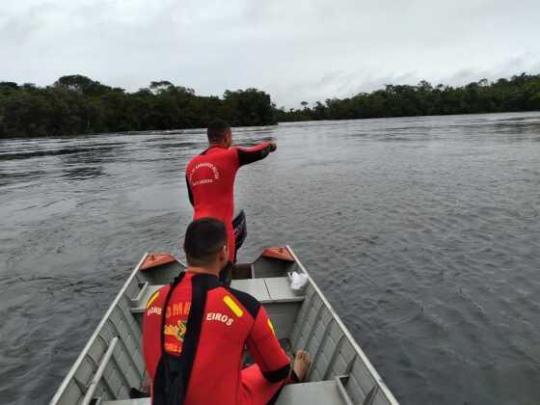
View On WordPress
0 notes
Text
A GRANDE NOITE PSICODÉLICA
Esta noite procurei o meu amor pelas ruas da grande Babilônia
Na Augusta, no Bixiga
entre os skatistas que fumavam na Roosevelt…
Coisa de quem ama um boêmio
Não faz muito tempo contemplamos juntos a aurora de um novo dia
enquanto o amor escorria entre os lençóis
A minha língua percorreu as veias do meu amado
em busca de seu sangue em ebulição
Ele vermelho, eu policromática
reluzente, quente, úmida
e o que mais ele queira que eu seja se lhe tenho nos meus braços
entre as minhas pernas
Refaço o trajeto a fim de compreender onde o nosso amor entrou na contra-mão
Volto para a noite de inverno em que eu apareci na vida dele falando da açucena,
das corridas de argola, e do canto da ema
Convidando-o para amar em Salvador
no Recife e no Rio
Para botar os dedos nas feridas da Paulicéia
E dizendo que o sertão sempre foi mar
Eu julguei ter visto uma ovelha
mas era um lobo
E correu para não perder último trem para o Anhangabaú
Eu disse aos meus amigos que iria me casar com ele em junho
na festa de São Pedro de uma adorável cidade do interior
Trocando a valsa pelo baião
e as alianças de ouro por anéis da mata branca
A poesia concreta das esquinas da Selva de Pedra darão testemunho da nossa paixão
Das serenatas e dos choros
Do quanto o amei
e amo
Tanto que tenho medo de dizer
Dizer que ele atiça todos os meus demônios
e o romantismo burguês
Mas ele sempre soube que eu herdei o ímpeto de Dadá
E que sou remédio e veneno
O trem tangencia a Marginal rumo à Zona Sul
Os edifícios ameaçam desabar sobre as nossas cabeças
As construções faraônicas transbordam o sangue e o suor dos meus
Passo pela ponte do Limão
e as minhas lágrimas acompanham o compasso da garoa paulistana
O telefone toca
é o meu amado
Os Gaviões botaram abaixo a estátua de Caxias
Prometendo erguer, em seu lugar, honrarias a Raimundo, Cosme e Manuel Balaio
O Diabo Velho também será tombado
E o Galo fará o Gato arder em chamas pela última vez
Vamos tomar as máquinas e as terras
para que os nossos filhos não morram de fome
Vamos fazer poesia, música e amor
Depois poderemos ver o pôr do Sol no Farol da Barra
ou levar a vida bucólica que almejamos
Encontro o meu consagrado em frente à Saudosa Maloca
e juntamos os nossos fuzis
Agora vejo morros e vales dissolvendo-se em líquido pastoso
Vejo cores vibrantes
e o vermelho dos olhos do meu amor
Vejo a insurreição regurgitar a tradição
E um casal de camaradas copulando entre os escombros da velha sociedade
Sinto o fortum da putrefação da ordem vigente
E os ventos do norte trazendo clamores de emancipação
Eu vejo um idoso barbudo rezando pelas almas dos que tombaram
E três crianças famintas partilhando o brioche
Ouço o canto do carcará mergulhando entre os arranha-céus
Os nossos irmãos profanam o altar dos deuses de Ustra
e honram a memória de Marighella
Um beco à meia-luz me remete ao candeeiro de Ana
A grande Babilônia está em chamas
Os jovens carregam bandeiras alvinegras
e fazem os anéis de Saturno de bambolês
A primavera se espalha por todo o país
Dou a mão ao meu companheiro
Fugimos juntos por entre as vielas do Bixiga
“O seu amor é um leão feroz e insaciável
atentando contra as colunas da catedral” ele diz
Ouço o som de uma sanfona…
O meu camarada pega o violão para entoar canções de resistência
Descemos a ladeira da memória
Vingamos o sangue dos inocentes
E dançamos baião pelas ruas entorpecidos de paixão
Amanhã vai ser outro dia
Esta noite o espírito de Paris pousará sobre São Paulo
pois ousaremos tomar o céu de assalto.
- Érica Santana Santos
1 note
·
View note
Photo

Very very cold Sunday🥶 From 3/1, my song ‘I Wanna Be The One’ will be air on the internet FM radio in London, Tokyo, LA, NY, Rio de Janeiro, Sydney, Chicago, Houston, Miami! #rooseveltisland #newyork #newyorkcity #ny #nyc #usa #usa🇺🇸 #cat #winter (at Roosevelt Island) https://www.instagram.com/p/CpJccacr1XP/?igshid=NGJjMDIxMWI=
0 notes
Photo




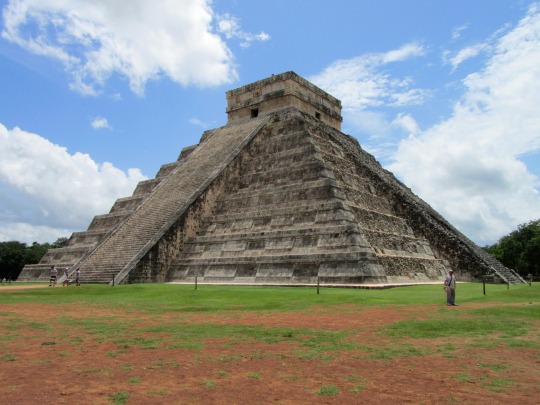
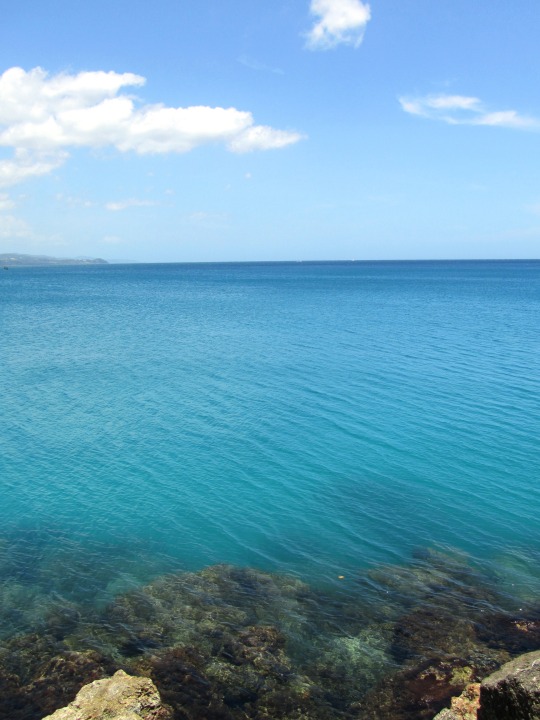




Pan American Day
Pan American Day is celebrated on April 14 each year. This is a day for us to remember the first International Conference of American States, which took place in Washington and resulted in the formation of the Organization of American States (O.A.S.) in 1948. The O.A.S. is the oldest regional organization of its kind in the world. Pan American Day celebrates the coming together of the Americas — the northern and southern American states. It also celebrates the various cultures and diverse traditions of the region. The day also reminds us to strive for better opportunities for all the states.
History of Pan American Day
The idea of an international union of the Americas was first brought up at the 1826 Congress of Panama by José de San Martín and Simón Bolívar. The aim was to create an alliance of American nations. At the time, however, it was decided that national interests were more important than the union of the various countries.
However, on April 14, 1890, the idea of having international solidarity among the Americas was reignited at the First International Conference of American States. This conference took place in Washington, D.C. with 18 member nations who decided to join the assembly. This was the beginning of the Organization of American States (O.A.S.). This organization was served by a permanent secretariat called the Commercial Bureau of the American Republics.
In the 1930s, U.S. President Franklin Delano Roosevelt organized an inter-American conference in Buenos Aires to talk about the need for a ‘League of Nations of the Americas.’ The members of this league would stay neutral in the event of any conflict. Members also adopted a system of collective security in response to the demands of the post-war situation. The Inter-American Treaty of Reciprocal Assistance (Rio Treaty) was signed in 1947 in Rio de Janeiro.
Finally, after many subsequent conferences, April 1948 saw the birth of the O.A.S. with signatures from 21 American member countries. This particular conference in 1948 also approved and adopted the American Declaration of the Rights and Duties of Man, which became the first human rights document in the world.
Pan American Day timeline
1826 The Idea of Pan America is Born
José de San Martín and Simón Bolívar introduce the idea of an international union of the Americas at the Congress of Panama.
April 14, 1890 The Beginnings of O.A.S.
The First International Conference of American States is held in Washington, D.C.
1930s The Need for a League is Proposed
U.S. President Franklin Delano Roosevelt organizes a conference to propose a ‘League of Nations of the Americas.’
April 1948 Birth of the OAS
The Organization of American States is established with signatures from 21 American member countries.
Pan American Day FAQs
Why do we celebrate Pan American Day?
Pan American Day is a day to celebrate the alliances we have with other countries in North and South America. It is an opportunity to be thankful for the many opportunities that we have.
Why is Pan American Day important in Belize?
In Belize, Pan American Day is also a day of celebrating the arrival of various cultural groups from the Yucatan. It was originally known as Columbus Day.
What do people do on Pan American Day?
Parades and shows are held on Pan American Day. People also set up exhibits.
How to Observe Pan American Day
Plan a vacation
Increase your knowledge
Take a quiz
There is no better way to celebrate this day than to go and visit other American states. Explore the variety of cultures that the Americas have to offer.
If you are a reader, find the nearest bookstore and read up about the different historical periods and cultures of the Americas. You can also listen to podcasts or audiobooks.
Find a fun quiz to take with your friends or family. Make sure it is about North and South America.
5 Interesting Facts About The Organization Of American States (O.A.S.)
The O.A.S. helps strengthen democracy
The O.A.S. strives for peace
The O.A.S. defends human rights
The O.A.S. fosters free trade
The O.A.S. stands for sustainable development
The organization oversees free and fair elections in its member states.
The organization has initiated peace-keeping missions in places like Haiti and Guatemala.
The O.A.S. monitors and generates reports on the human rights situations in member states.
It supports intracontinental free trade from Alaska to Tierra del Fuego.
It promotes sustainable development to fight poverty and climate change.
Why Pan American Day is Important
It’s a chance to revisit the past
It’s a reminder to have an attitude of gratitude
It celebrates diversity
This day reminds us to go back in time and look at how this union came to be. It is necessary to remember the many contributions that this union has made to life as we know it in America.
This day helps us to be grateful for having allies. We should also be grateful for the many diplomatic and political advantages of this union.
Pan American Day celebrates various cultures and people from the Americas. It makes us appreciate the rich heritage and history of the many generations before us.
Source
#Haiti#Jamaica#Mexico#Chichén Itzá#Caribbean Sea#Lake Louise#USA#Canada#Lake Ontario#Toronto#Arches National Park#Delicate Arch#Utah#Bonneville Salt Flats#Chicago#New York City#landscape#cityscape#trael#countryside#original photography#tourist attraction#landmark#Pan American Day#14 April#OAS#Organization of American States
0 notes
Text
Sao Paulo Grand Prix hakkında

Formula 1, bu hafta sonu şampiyonanın sondan bir önceki turu olan São Paulo Grand Prix'si için ikinci ve son kez ekvatorun altına iniyor.
Daha yaygın olarak Interlagos olarak bilinen Autódromo José Carlos Pace, çeşitli sollama fırsatlarının yanı sıra bol miktarda tekerlekten tekerleğe aksiyon sağlayan bükülmüş ve dalgalı düzeni sayesinde sürücüler ve taraftarlar için sıkı bir favoridir.
Brezilya'daki F1 yarışlarının ilk yirmi yılının çoğunda Rio de Janeiro'nun Jacarepaguá pisti arasında bölünmüş ev sahipliği görevlerinden sonra Interlagos, pandemi yılları bir yana, 1990'dan beri takvimde kalıcı bir fikstür oldu.
Brezilya'daki ilk F1 Dünya Şampiyonası yarışı, 1973'te Interlagos'un orijinal 26 virajlı, 7.960 km'lik düzeninde yapıldı. Mekan on yıllar boyunca gelişti ve bizi bugün bildiğimiz ve sevdiğimiz 4.309 km'lik parkurla bıraktı.
Her yıl tribünleri toplayan ev sahibi taraftarlar, Interlagos'taki ilk üç şampiyonluk yarışında üst üste üç Brezilyalı galibiyete maruz kaldı - Carlos Pace hat-trick yapmadan önce ikisi Emerson Fittipaldi için.
Doğal bir kasede geçen 12. virajdaki son fren bölgesinden 1. viraja kadar olan tırmanış, Senna S'den Williams Racing Tribünü'nün bulunduğu Curva do Sol'a hızla geri dalmadan önce şaşırtıcı bir 43 metrelik tam gaz eğrisidir.
Sürücülerin bir an bile dinlenmeden direksiyon simidinde sürekli olarak çalıştıkları bükülen orta sektörün sekiz dönüşünde zaman kazanılır ve kaybedilir.
Gezegendeki sadece bir avuç mekan, Interlagos kadar ikonik anlara sahip çıkabilir ve her köşe sizi sporumuzun hikayesinde belirli bir ana götürebilir.
Bunları biliyor muydunuz?
Interlagos pistinde inşaat çalışmaları 1938'de başladı ve pist tasarımcıları o dönemin önde gelen üç pistinden ilham aldı: İngiltere'de Brooklands, Fransa'da Montlhery ve ABD'de Roosevelt Raceway.
Interlagos, 38 ile en çok Dünya Şampiyonası Grands Prix'sine ev sahipliği yaptı, önündeki altı mekanı adlandırabilir misiniz?*
Eski Williams pilotu Rubens Barrichello, Interlagos pistine bir taş atımı mesafede büyüdü, ancak evindeki Grand Prix'de şans eseri berbat bir şansa sahipti. Evdeki 19 startında, 2004'te tek bir üçüncülüğün en iyi sonucu ile dengelenen en az 11 emekliliğe maruz kaldı.
Interlagos'ta beş farklı Brezilyalı sürücü kazandı: Emerson Fittipaldi, Nelson Piquet, Ayrton Senna, Felipe Massa ve Carlos Pace.
4.309 km'lik turun yaklaşık 'i tam gaz koşulla koşuldu ve her iki Williams aracı da 2021'de 70 saniyeden daha kısa bir sıralama turu süresi kaydetti.

Williams sürücüleri ve teknik heyetin yarış ile ilgili düşünceleri ise şunları içeriyor.
Alex Albon, son yarışlar tarafından desteklendi ve kesinlikle 2019'dan bu yana ilk kez Interlagos'ta yarışmayı dört gözle bekliyor: "Brezilya gerçekten harika bir pist, çok fazla tarih ve karaktere sahip eski okul pistlerinden biri.
"Taraftarların orada ne kadar tutkulu olduğunu görmek de harika, bu da onu yarışmak için harika bir yer haline getiriyor.
"Yılın son iki yarışına girerken, sezonu iyi bir notla bitirmek istiyoruz, bu yüzden sahip olduğumuz her şeyi vereceğiz."
"Ayrıca, bu hafta sonu bir Sprint Yarışı olarak, haftanın başından itibaren her şeyin üstünde olmak önemli, bu yüzden nasıl gideceğimizi görelim." dedi.
Nicholas Latifi, bu hafta sonu takımla son iki yarışına başlıyor ve bizimle olan zamanını yüksek bir seviyede bitirmeyi hedefliyor, havanın damalı bayrağın gelmesi emrini sarsabileceğinden umutlu: "Sezonun son birkaç yarışı için tekrar devam edeceğim için heyecanlıyım.
"Brezilya ile başlıyoruz ve Sprint Race etkinliklerine geri dönüyoruz, bu da en son bunlardan birine sahip olduğumuzdan beri çok uzun bir zaman gibi hissettiriyor."
"Programdaki yeni değişiklikten ve sıralama turlarından önce devam etmek için bir antrenman seansı yapmaktan her zaman keyif alıyorum.
"Kağıt üzerinde, Brezilya teknik olarak aracımız için en uygun araç değil, ancak hava her zaman bir şans sunuyor, bu da bu hafta sonu Sprint Yarışı ile birlikte bir faktör oynayabilir gibi görünüyor."
"Herhangi bir fırsattan yararlanmaya çalışacağız."
Logan Sargeant da bu hafta sonu direksiyona geri dönecek ve Alex'in Cumartesi günkü FP2'deki koltuğuna oturacak ve bu da onun zevk aldığı bir fırsat.
"São Paulo'da FP2 için FW44'e geri dönmeyi dört gözle bekliyorum. Takımla ilerlemeye devam etmek ve Austin ve Mexico City'de kazandığım deneyimlerin üzerine inşa etmek için sabırsızlanıyorum.
"Interlagos gibi ikonik bir pistte bisiklet sürme fırsatı ve kenara çekilmiş virajları ve Senna S harika bir duygu.
"Williams'taki herkese, direksiyonun başına geçmem için bana bir şans daha verdikleri için bir kez daha teşekkür ederim." dedi.

Takımın Araç Performansı Başkanı Dave Robson, Williams hayranlarının önümüzdeki hafta sonundan neler bekleyebileceklerini önizledi: "Interlagos, sezonun son Sprint Etkinliğine ev sahipliği yapıyor ve bu nedenle aracı Parc Ferme'ye bağlamadan önce antrenman süresi çok sınırlı.
"Mexico City kadar zorlu olmasa da, São Paulo hala deniz seviyesinin önemli ölçüde üzerinde ve sürücülerin optimize etmesi zor bir pist.
"Güç ünitesi ve fren soğutma kurulumunu FP1'in başlarında tamamlamayı ve ardından akşam sıralama turlarından önce kurulum üzerinde çalışmayı hedefleyeceğiz."
"Sprint Yarışı'nda uzun bir DRS treninin oluşması muhtemel ve bu yüzden sollama yapmak zor olabilir.
"Bu nedenle, sıralama turları çok önemli ve FP2'ye kadar ana odak noktamız bu olacak." Grand Prix, büyük ölçüde, bu hafta sonu Pirelli serisinin ortasından gelen lastiklerin performansına bağlı olacak.
"Pist sıcaklığı lastik davranışında bir rol oynayacak ve şu anda çoğu gün bölgedeki yağmur ve fırtınalarla tropik görünen tahminlerle, yarış devam edene kadar optimum lastik stratejisini tahmin etmek zor olabilir." Grand Prix'de sollamak, Sprint Yarışı'ndan daha kolay olmalı.
"Logan Sargeant, FW44'te FP seanslarına devam ediyor ve bu hafta sonu Alex'in aracını FP2'de kullanacak."
"Bu bir Sprint Etkinliği için alışılmadık bir durum ve Alex'in aracı FP2 sırasında Parc Ferme'de olacağı için normalden daha zor.
"Ancak, Logan'ın elde edeceği deneyim paha biçilmez ve ona başka bir fırsat vermek geleceği için iyi bir yatırım.
Austin ve Mexico City'de mükemmel bir iş çıkardı ve sıra dışı hafta sonu formatına rağmen bunu tekrar yapacağından eminiz."
Read the full article
0 notes
Text
Today In History:

A bit of October 12th history…
539 BC - The army of Cyrus the Great of Persia takes Babylon
1216 - King John of England loses his crown jewels in The Wash as the flood tide swamps his wagons
1492 - Christopher Columbus’s expedition makes landfall on a Caribbean island he names San Salvador; he believes he has reached east Asia (pictured below)
1609 - Children’s rhyme “Three Blind Mice” is published in London
1792 - 1st celebration of Columbus Day in USA in NY
1892 - US Pledge of Allegiance 1st recited in Public Schools
1901 - Theodore Roosevelt renames “The Executive Mansion” as “The White House”
1931 - Christ the Redeemer statue opens standing 98 ft high (30 m) on top of Mount Corcovada overlooking Rio de Janeiro (pictured)
1933 - Gangster George Francis Barnes, aka Machine Gun Kelly, is sentenced to life imprisonment
1978 - Sid Vicious charged with murder of girlfriend Nancy Spungen (pictured below)
1 note
·
View note